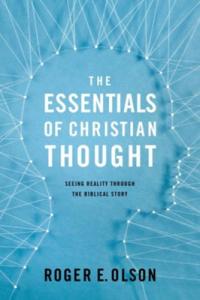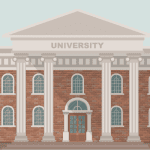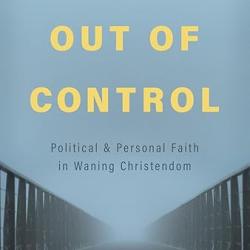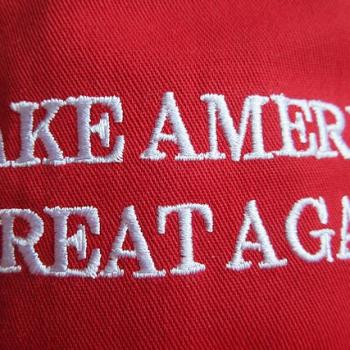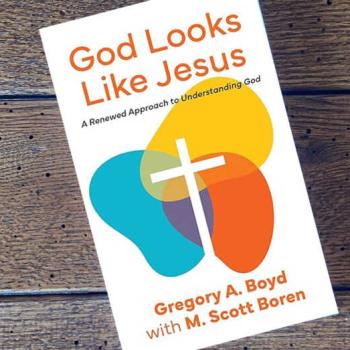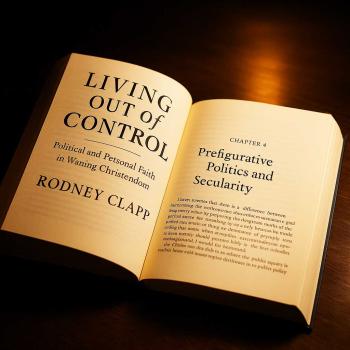Essentials of Christian Thought: Appendix
The appendix expresses the reason for the book! It’s title is : A Model for the Integration of Faith and Learning. Several years ago I posted here an essay on which this appendix is based. The book’s publisher asked me to write a book explaining the “faith” part of faith and learning integration. This is that.
Usually here I avoid quoting the book, but here is an especially succinct expression of “faith-learning integration” found on pages 244-245:
”The integration of faith and learning [in Christian colleges and universities] was three threats—anti-intellectual obscurantism (common in the Bible colleges movement), secularism, and two-truths thinking. The basic idea was and is: Let’s focus the ‘faith’ part of higher education, especially outside biblical and theological studies, on what C. S. Lewis called ‘Mere Christianity’ and what before that the Scottish philosopher-theologian James Orr called ‘The Christian View of God and the World.’ And let’s insist that our post-fundamentalist, newer evangelical Christian higher education in arts and sciences be based on that together with the material facts of scholarly research and let’s integrate them with each other. Obviously that was and remains an ambitious and tension-filled project, but it is what defines post-fundamentalist, evangelical higher Christian education.”
I have found two main objections to the project of integrating faith (in the sense explained in this book) and learning (the arts and sciences). One is that much of what is found in modern arts and sciences is so distant from and in conflict with the Bible that a faithful biblicist Christian ought really simply to reject the modern arts and sciences and teach and learn only what is taught in the Bible, meaning, however, a traditionalist interpretation of the Bible. I attended a Bible college founded on that principle idea where the Bible was the main textbook in every course taught. “Modern thought” was simply rejected. The result was an ethos of obscurantism. So, there was no real need for integration of faith and learning. Both were misunderstood.
Later, I encountered the second objection to the project of faith and learning as I attended and earned two graduate degrees (MA and PhD) from a secular university. Although two or three of my professors in the Religious Studies Department such as John Newport (to whom this book is dedicated) did promote and practice integration, the university as a whole tended to consider Christian faith at best private and at worst nonsense.
Then I taught at three Christian universities in succession over thirty some years. At the first one, most faculty were in favor of faith-learning integration but the president, a famous healing evangelist and founder of the university, included in the “faith” part of faith-learning integration his own peculiar theology of “Seed Faith”—a mild form of the prosperity gospel. He also said in chapel that he believed it important for scientists at his university to pray over their experiments in, for example, cancer research, and allow the Holy Spirit to guide their endeavors. In chapel services, he and his selected guest speakers, often said the most ridiculous things such as “You can’t be a good witness for Jesus from a wheelchair” and “If my grandson had been born in The City of Faith [hospital under construction], he wouldn’t have died.” The latter claim was based on the president’s belief that ONLY in his hospital would prayer and medicine work hand-in-hand.
Then I taught at a “middle-of-the-road” and very well-known and highly regarded Christian liberal arts college that emphasized the integration of faith, in the sense I mean in this book, with every discipline taught. However, repeatedly, I heard guest presenters of the project misrepresented or presented in such a way as to guarantee protest and rejection. And many of my colleagues did reject the project.
My explanation of the project of integrating faith and learning in this Appendix is probably controversial at the point where I argue that there cannot be any actual, real conflict between true Christian faith and any material fact of the sciences. Even more likely however, is that some even conservative evangelical Christians will reject my argument that “Christian faith” in the sense I mean in this book must adjust to material facts of the sciences. I explain that I do NOT mean it must adjust to theories of the sciences, some of which must be rejected by the thinking Christian. What I mean is that once something is settled fact, beyond serious doubt or question, Christian faith must accept it as God’s truth and, if necessary, adjust traditional Christian belief to it. An example is the age of the earth. For centuries Irish Anglican bishop Ussher’s dating of creation to 4004 BC was accepted as biblical truth by many conservative Christians. To accept that as true now would be sheer obscurantism. But it was never actually taught in the Bible! It was taught by Ussher without knowledge of geology.
In other words, the integration of faith and learning is a “two way street.” The two must be brought into genuine conversation with each other and they must inform each other. The faith part ought to count as false THEORIES of the modern arts and sciences that actually DO conflict with what I call “biblical-Christian metaphysics.” An example is naturalism. Another example is monism. I could go on. These (from a Christian perspective) false metaphysical perspectives often get smuggled into modern and contemporary “learning” (disciplines) and often they get smuggled into teaching in even evangelical Christian colleges and universities. For example, when I taught at that evangelical liberal arts college some of my faculty colleagues were cultural relativists. They told me to my face that there is no such thing as “the Christian worldview.” Naturally, they resisted the whole project of faith-learning integration.
I will stop now. This bring us to the end of discussion of this book. So I invite comments and questions from readers of the book. Questions are invited from readers of this blog post who did not read the book or did not make it to the Appendix. Comments are invited from those who read the book through to the Appendix.
*Note: If you choose to comment, make sure your comment is relatively brief (no more than 100 words), on topic, addressed to me, civil and respectful, not hostile or argumentative, and devoid of pictures or links.*


